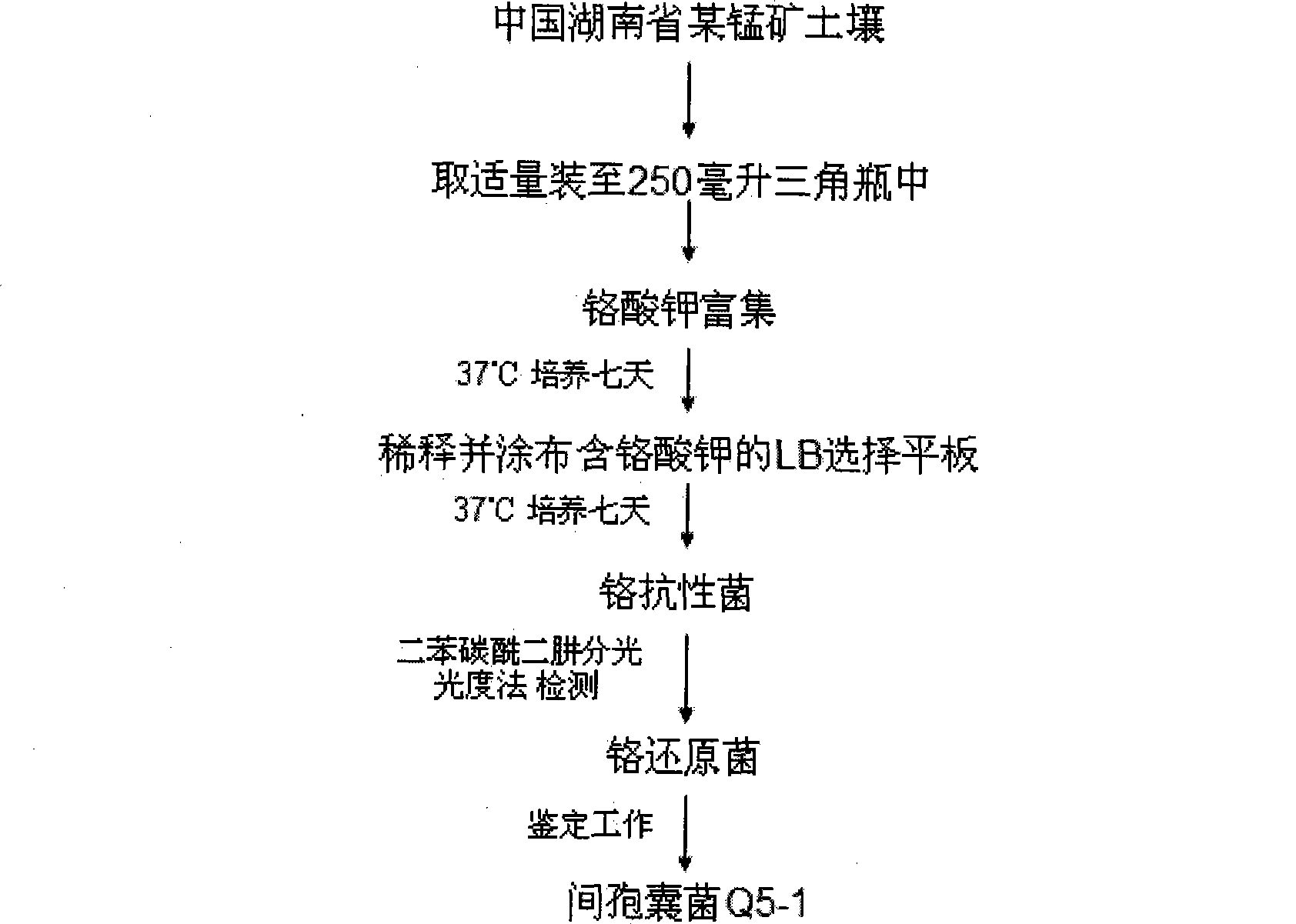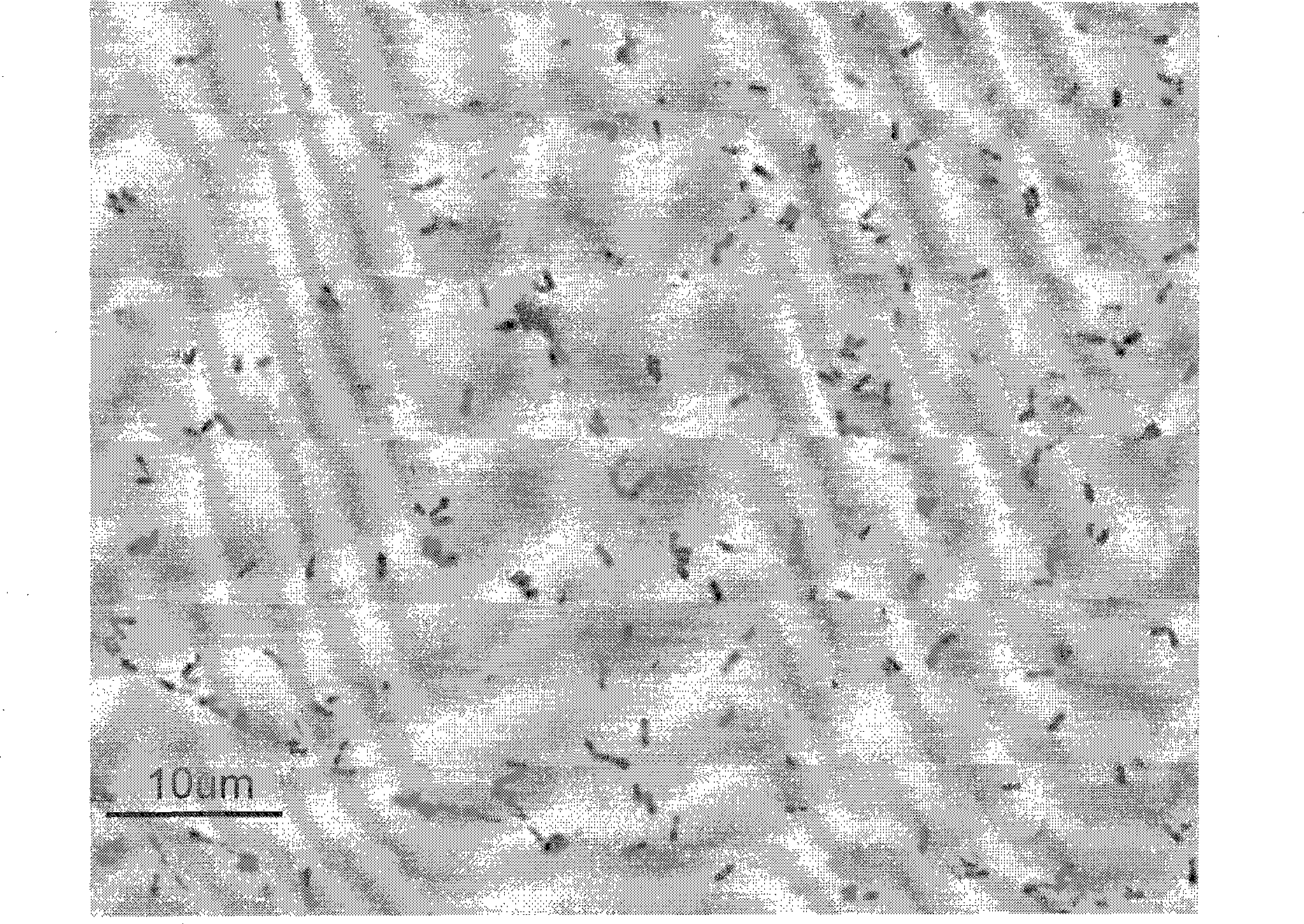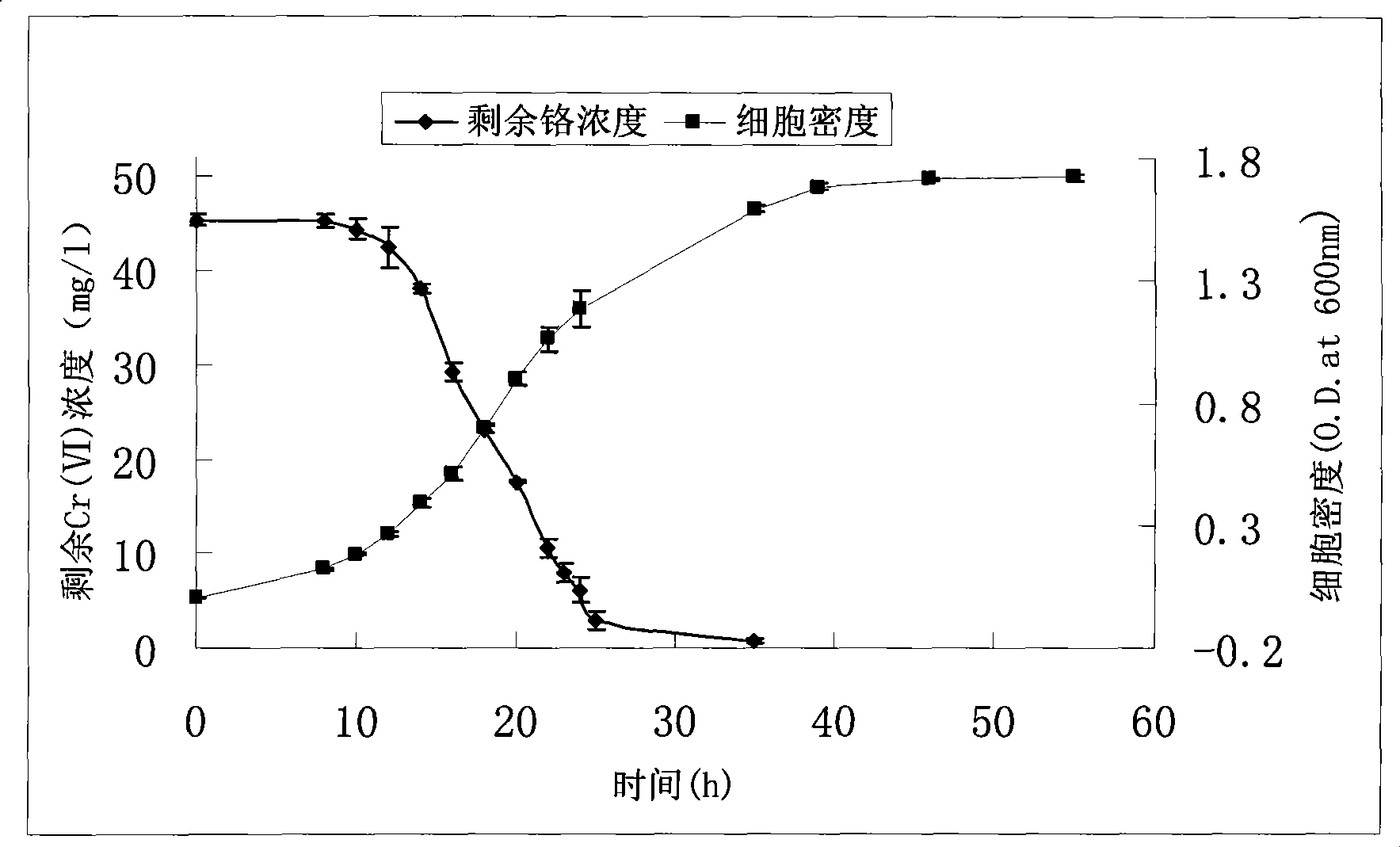M-sporangiocyst bacterium Q5-1 for purifying chromium pollution in wastewater and uses thereof
A technology of metasporangium and chromium pollution is applied in the field of environmental microorganisms to achieve the effect of reducing the harm of chromium
- Summary
- Abstract
- Description
- Claims
- Application Information
AI Technical Summary
Problems solved by technology
Method used
Image
Examples
Embodiment 1
[0026] Example 1 Isolation and identification of chromium-reducing bacteria
[0027] (1) Sample collection: A soil sample from a manganese mine in Hunan Province, China was collected in early July 2007.
[0028] (2) Sample enrichment: Accurately weigh 100g of soil sample into a 250ml sterilized Erlenmeyer flask, add 5ml of 100mM K 2 CrO4 , stir gently and culture in a 37°C incubator for a week, pay attention to add sterile water to ensure that the sample is not dry.
[0029] (3) Isolation of chromium-resistant bacteria: Accurately weigh K 2 CrO 4 10g of the enriched soil sample was placed in a conical flask filled with 90ml of sterile normal saline, placed in a shaker at 37°C for half an hour, and then 1ml was gradually diluted to 10ml in 9ml of sterile normal saline. -4 , 10 -5 , 10 -6 , respectively take 0.1ml coating containing 1mM K 2 CrO 4 LB solid medium plate, spread 3 plates for each dilution, culture in a 37°C incubator for one week, the grown strains are chrom...
Embodiment 2
[0037] The chromium reduction curve of embodiment 2 Metacystis Q5-1
[0038] Pick a single clone of Metacystis Q5-1 and inoculate it into 100ml LB liquid medium, place it in a shaker at 37°C for shaking culture, and take samples at intervals to measure the cell density to OD 600 It is about 0.15, stored in a refrigerator at 4°C, and used as a seed bacterial solution for inoculation. Draw 1ml into 100ml fresh LB liquid medium with 1% inoculum size, add 1ml 100mM K 2 CrO 4 , so that the final concentration was 1 mM, and placed in a shaker at 37°C for shaking culture. Sampling was started 8 hours after the start of culture, and samples were taken every 2 hours until K 2 CrO 4 until fully restored. Take 1.2ml and 1.5ml respectively each time, and measure the cell density (OD 600 ) and hexavalent chromium concentration (OD 540 ), all are taken and made now. The specific method is as follows: First, measure the cell density (OD 600 ), with deionized water as a reference, di...
Embodiment 3
[0039] Example 3: The cumulative reduction effect of Metacystis Q5-1 on hexavalent chromium in simulated chromium-polluted water
[0040] Deionized water plus K 2 CrO 4 It was used to simulate chromium-polluted water bodies, and to investigate the cumulative removal effect of Metacystis Q5-1 on hexavalent chromium. The specific method is as follows: Prepare three 250ml Erlenmeyer flasks as three repetitions, each filled with 100ml LB medium (121°C, autoclaved for 30 minutes), and absorb 1ml of cell density OD with 1% inoculum 600 For the inoculation of the Q5-1 bacterial solution of about 0.15, add 1ml of 100mM K 2 CrO 4 The mother solution was adjusted to a final concentration of 1 mM, and placed in a shaker at 37°C for shaking culture. Start to culture for 12 hours and begin to take samples for measurement until the K added for the first time 2 CrO 4 Almost completely reduced; then add 1ml 100mM K again 2 CrO 4 Mother solution, so that the final concentration is 1mM,...
PUM
 Login to View More
Login to View More Abstract
Description
Claims
Application Information
 Login to View More
Login to View More - R&D
- Intellectual Property
- Life Sciences
- Materials
- Tech Scout
- Unparalleled Data Quality
- Higher Quality Content
- 60% Fewer Hallucinations
Browse by: Latest US Patents, China's latest patents, Technical Efficacy Thesaurus, Application Domain, Technology Topic, Popular Technical Reports.
© 2025 PatSnap. All rights reserved.Legal|Privacy policy|Modern Slavery Act Transparency Statement|Sitemap|About US| Contact US: help@patsnap.com



